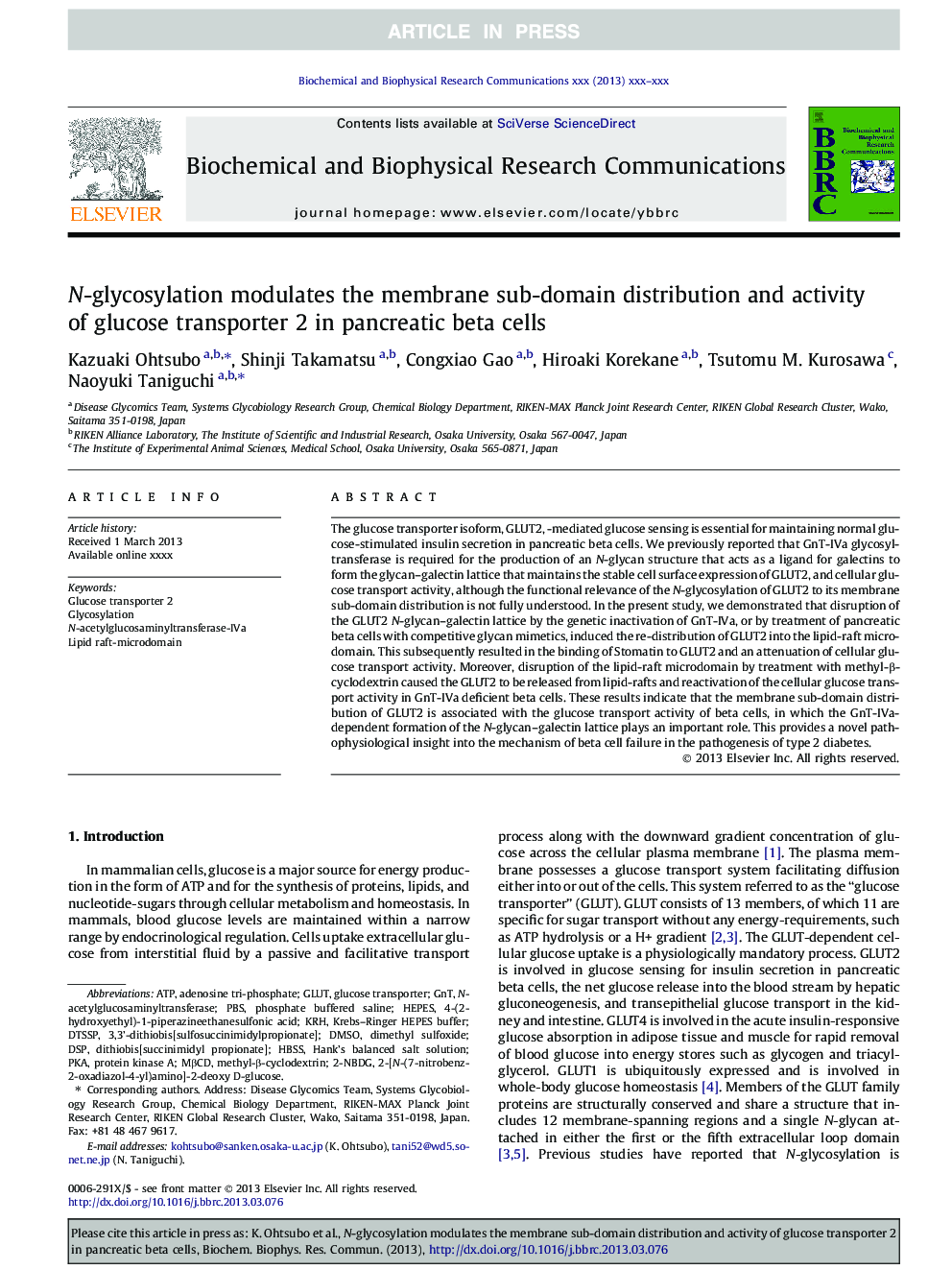| Article ID | Journal | Published Year | Pages | File Type |
|---|---|---|---|---|
| 10759528 | Biochemical and Biophysical Research Communications | 2013 | 6 Pages |
Abstract
The glucose transporter isoform, GLUT2, -mediated glucose sensing is essential for maintaining normal glucose-stimulated insulin secretion in pancreatic beta cells. We previously reported that GnT-IVa glycosyltransferase is required for the production of an N-glycan structure that acts as a ligand for galectins to form the glycan-galectin lattice that maintains the stable cell surface expression of GLUT2, and cellular glucose transport activity, although the functional relevance of the N-glycosylation of GLUT2 to its membrane sub-domain distribution is not fully understood. In the present study, we demonstrated that disruption of the GLUT2 N-glycan-galectin lattice by the genetic inactivation of GnT-IVa, or by treatment of pancreatic beta cells with competitive glycan mimetics, induced the re-distribution of GLUT2 into the lipid-raft microdomain. This subsequently resulted in the binding of Stomatin to GLUT2 and an attenuation of cellular glucose transport activity. Moreover, disruption of the lipid-raft microdomain by treatment with methyl-β-cyclodextrin caused the GLUT2 to be released from lipid-rafts and reactivation of the cellular glucose transport activity in GnT-IVa deficient beta cells. These results indicate that the membrane sub-domain distribution of GLUT2 is associated with the glucose transport activity of beta cells, in which the GnT-IVa-dependent formation of the N-glycan-galectin lattice plays an important role. This provides a novel pathophysiological insight into the mechanism of beta cell failure in the pathogenesis of type 2 diabetes.
Keywords
DTSSPN-acetylglucosaminyltransferaseGNTKRHHEPES2-NBDGDSPHBSSGLUTpKaMβCDPBS4-(2-hydroxyethyl)-1-piperazineethanesulfonic acidDMSOAdenosine tri-phosphateATPGlucose transporterDimethyl sulfoxidePhosphate buffered salinemethyl-β-cyclodextrinHank’s balanced salt solutionprotein kinase Aglucose transporter 2Glycosylation
Related Topics
Life Sciences
Biochemistry, Genetics and Molecular Biology
Biochemistry
Authors
Kazuaki Ohtsubo, Shinji Takamatsu, Congxiao Gao, Hiroaki Korekane, Tsutomu M. Kurosawa, Naoyuki Taniguchi,
